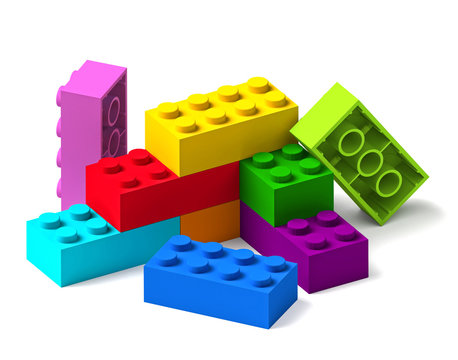How does your magic C++ source code become something an end user can double click and make cool things happen?
Now that you have seen a bunch of symbols from my overly awesomely simplified infograph let's get to cracking with more analogies! Look at all those fun Legos you can play with to engineer a castle at the end of this post!

Building a house out of Lego bricks is a fun and engaging activity for many people. But what about the geeks? We enjoy building things and messing with Legos but have you ever thought about the similarities between building a Lego house and creating a program in C++? If you're curious about how your C++ source code turns into a program that can run on your computer, read on to learn more.
Let's dive deeper into the process of building a program in C++. The process involves three main steps: preprocessing, compiling, and linking.
The preprocessing step involves the preprocessor, which acts like a proofreader for your code. It checks for mistakes and performs transformations like including other files, defining macros, and replacing strings. This step is essential to ensure that your code is clean and free of errors before moving on to the next step.
For example, let's say you have a C++ program that needs to use a library called "iostream." In this case, you would use the #include directive in your code to tell the preprocessor to include the iostream library before compiling your code.
The next step is compiling, which involves the compiler translating your preprocessed code into machine code. This means breaking your code down into individual statements and generating the corresponding machine code for each one. It's kind of like following the instructions to build a Lego house.
For example, let's say you have a simple C++ program that prints "Hello, World!" to the console. The compiler would translate this code into machine code that the computer can understand and execute.
Finally, the linker acts like a librarian, taking all of the object files produced by the compiler and combining them into a single executable file. This involves resolving any references between the object files and adding any necessary startup and termination code. It's like combining all your different Lego sets into one big structure.
For example, if your C++ program uses multiple source files, the linker would combine all the object files generated by the compiler into a single executable file.
By the end of this process, you'll have a program that you can run on your computer, just like you'll have a completed Lego house that you can play with. So the next time you're writing C++ code, remember that you're essentially building a digital structure out of machine code Lego bricks!
In conclusion, building a program in C++ is like building a Lego house. It involves three main steps: preprocessing, compiling, and linking. Just like building with Lego bricks, the process of building a program can be fun and engaging, and the end result is a digital structure that you can be proud of.





No comments:
Post a Comment